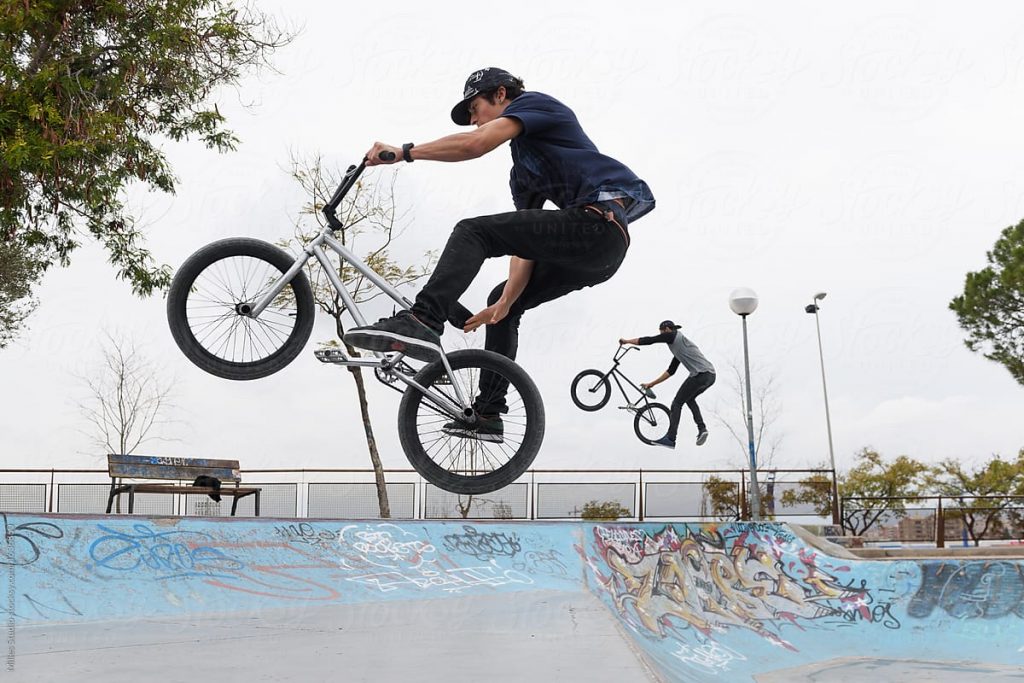A sprocket can by different names, including chairing, chain wheel and front cog. But whatever name you use, the sprocket is an important component on any BMX bike. The type of sprocket you should choose depends on your style of riding as well as how much stress you put on the drivetrain. Here are some tips on how to decide which sprocket is perfect for you.
Sizes
Even though BMX bikes don’t have multiple gears, when choosing the right BMX sprockets, you need to consider the number of teeth on the front ring attached to the cranks and rear driver attached to the hub. This way, you can find the ideal match, also known as ‘gear ratio’.

To define ‘gear ratio’ you need to simply divide the number of front sprocket teeth (say 25) by the number of the rear sprocket (nine) and you will be left with a number (2.78). This means that the rear wheel will rollover two-and-three-quarter times for every rotation to the front sprocket.
Lower gear ratio will allow you to pedal easier, while the higher gear ratio will require more force to pedal. As a general rule, for a freestyle BMX rider, you should pick the sprockets that fit into the standard 2.75 gear ratio. This means that you can be able to accelerate quickly into a trick or a jump and still have enough speed and power. The most common gear combinations are 23/8, 25/9, 28/10, 30/11, 33/12, 36/13, 39/14 and 44/16.
For BMX race bikes, riders generally choose a much larger front BMX race sprocket as it allows them to generate explosive power. Gearing choice on a BMX race bike gets a lot more complicated the more progressive the riding becomes.
Materials

There are several variations of aluminium and steel used to manufacture BMX sprockets. Aluminium is most commonly used due to its high strength to weight ratio. Steel sprockets are generally lower price category as it’s less complicated to manufacture than aluminium. Although steel is stronger than aluminium, it’s also heavier and therefore sprockets are built to be thinner than their aluminium counterparts. And this undermines some of their strength benefits.
Types
Spline Drive – As the name suggests, spline drive sprockets attach to the crank arm through the crankset’s splined spindle. The spline drive sprockets are designed to work with a specific spindle, and that’s why you’ll need to choose a version that fits your exact spindle. This implies that both the number of splines and the diameter of the inner hole of the sprocket will have to match the number of splines and diameter of the spindle on your crankset.

Bolt Drive – This is the most common type of BMX bike sprocket. You can easily identify this style – just look at the back of the drive side and there should be a bolt that goes through the sprocket and threads into the crank. Some of the low-end complete bikes will have a 1-piece crank without an actual bolt threading in. Instead, there’s a pin sticking out of the arm and through the sprocket. The diameters have to match the inner holes of the sprocket and the spindle of your crankset.
Guards – Some sprockets either allow or have a built-in guard, which is designed to offer protection. This way, instead of hitting your chain, you hit your guard which prevents you from breaking the chain and risk falling and getting injured. There are two options of sprocket guards, one-piece designs fixed to the sprocket and additional attachments you need to bolt onto the sprocket.
What to Look For
First, you should decide on the gear ratio you want to achieve. As mentioned above, you can go for common gear combination with the standard 2.75 gear ratio. The standard gear ratio will function just fine for everyday riding, while riders that need a special setup for their style of riding will most probably pick one of the non-standard gear ratios.

When picking the material and matching pattern, you should think of how much abuse you will put on your drivetrain. If you’re a street rider performing tricks and go harsh on the bike and often break chains, it’s recommended that you choose a thicker steel sprocket with a matching pattern that values strength over weight savings. If you don’t put much stress on the bike while you ride, aluminium is the obvious choice.
How Much to Spend
While you’ll find some very expensive BMX sprockets for sale today, you should be looking to spend somewhere between 30 – 100 AUD. The more expensive sprockets will use higher quality sturdy materials machined in a way to provide a strong, durable component.
Product Reviews Can Help
Before making a final purchase decision, be sure to do your research and read product reviews. Product reviews are a great way to find out specifics about certain models, user impressions, and important things to watch out for. If you’re into sharing your experiences within the BMX community, after you’ve bought and had enough time to test a certain product, you can leave a review for other BMX lovers and help them in their research.
And remember, it’s always important to look for good quality components for your bike. The last thing you want is to be constantly replacing sprockets and drivetrain components on your beloved BMX.


